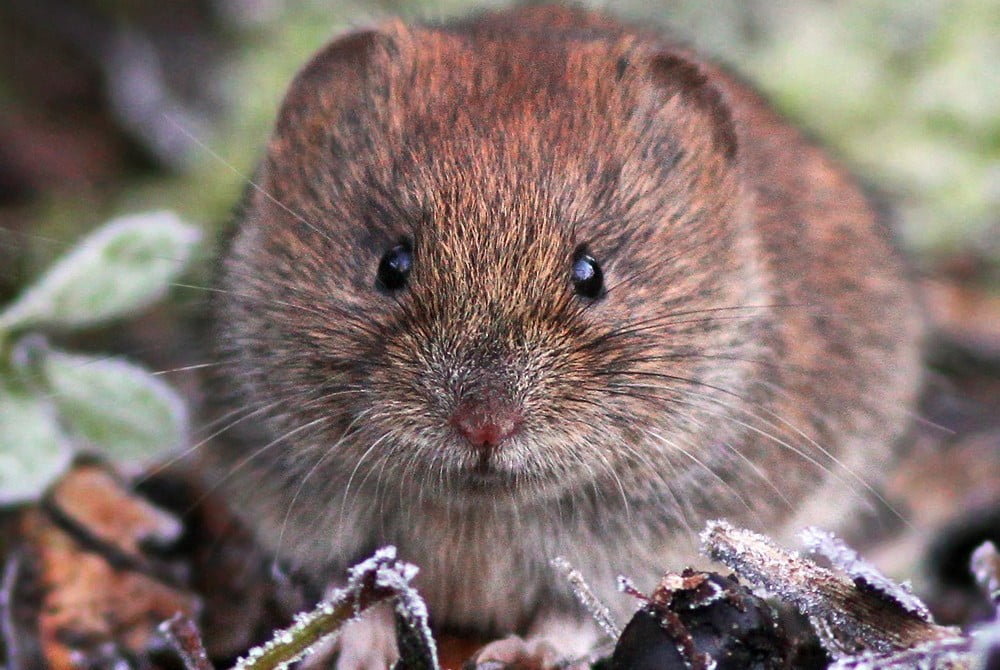As Israeli elections next Tuesday are nearing, Israelis are asking themselves what qualities they want to see in their next leader. Both Isaac Herzog, the current front runner according to the most recent polls, and Benjamin Netanyahu, are pointing to their calm and assertive demeanor when faced with tough situations. Now, a new study confirms what we’ve suspected all along: In life-threatening situations, few are able to overcome their fear, compose themselves and become the leaders of the pack.
A research team led by Tel Aviv University’s Prof. David Eilam recently simulated a hostile environment of predatory owls hovering over voles (small rodents resembling mice) in a cage. It turned out that the voles organized themselves into social structures from which leaders emerged. The study, which examined group behavior and qualities that leaders must possess in order to influence it, could very well inspire human society. Human leaders might be able to learn from their more primitive companions and make leaps forward into better facing the challenges ahead.
At this point in time, however, our understanding of leaders and their contribution to collective behavior is somewhat superficial. “There are always certain individuals who simply contribute more than others, but who they are and what traits make them leaders are questions we’ve managed to answer in a limited realm,” Eilam said in a statement.
Leaders don’t arise spontaneously
During the experiment, the voles, albeit in a secure cage, were under the impression that they were in a life-threatening situation because of the hovering predators. Some voles, however, emerged as leaders of the group thanks to exhibiting certain traits. “Less affected by the owl attacks, the experienced, larger male voles set the behavioral code, leading the other voles to imitate their behavior,” Eilam says. The larger, older male voles were competent not only because of their strength and size, but also thanks to their ability to remain calm and set a behavioral pattern for the smaller, highly anxious voles.
SEE ALSO: Putin Is A ‘Romantic Loner’ And Obama ‘Mistrustful’ According To Israeli Personality Algorithm
The organized behavior of a group rests on its ability to establish a structure of followers and leaders; however, the leader was found to emerge specifically out of an emergency situation. “Our study bucks against the notion that leaders arise spontaneously,” Eilam says.
Sign up for our free weekly newsletter
SubscribeThe dominant voles remained calm and were able to assert themselves as leaders. This enabled the smaller, female voles to go from a frightened state of panic to a calmer mindset. This ripple effect was supported by tests that established a clear difference of corticosterone (the hormone in charge of the regulation of stress responses) levels before and after the owl attacks. The result: smaller voles displayed elevated levels of this hormone, while the larger voles showed stable results.
Right after 9/11 local leaders emerged in New York
“These leaders have a dual role, not just to protect but also to stabilize the behavior of the group,” Eilam says. “You can also see such leaders emerge in human societies that are in distress — take post-9/11 New York City, for example. All differences are set aside and a typical behavioral code under threat emerges, with a few dominant figures at the head.” Other examples include Mahatma Gandhi, the leader of the Indian independence movement, and Winston Churchill, who led the UK during World War II.
SEE ALSO: HA! Study Shows Comedy Shows Have Greater Political Influence Than The News
But further research into this phenomenon is needed. Says Eilam: “We are also trying to uncover what the leaders benefit from their role in the group, and how information is passed on from one group to the next.”
Photos: Sudosurootdev, Joel Olives, Preston Keres, Tony Smith,
Related posts

Rehabilitation Nation: Israeli Innovation On Road To Healing

Israeli High-Tech Sector 'Still Good' Despite Year Of War








Facebook comments